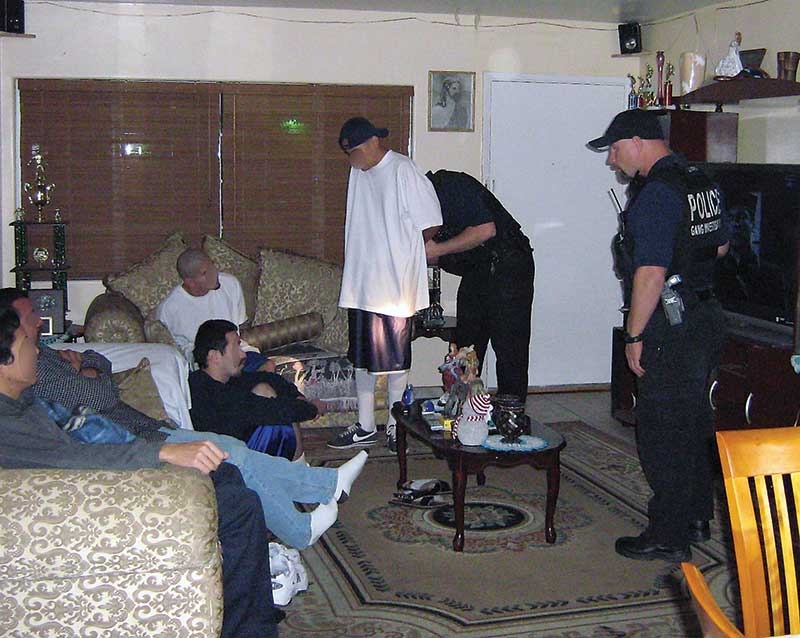
COP-1-300×208
In this issue’s Ayoob Files, we focus on a case in Texas where an unintended shot from a privately-owned service pistol with a trigger pull “lighter than manufacturer-recommended duty spec” crippled a suspect for life, and profoundly impacted the involved officer and his department. The plaintiff’s lawsuit alleged negligence because the officer had created, with the best of intentions, a trigger pull lighter than the gun’s manufacturer specified for duty/self-defense use.
Let’s look at some of the issues coming up when this topic is discussed. “Aw, that only matters if the shot was in fact accidental.” Wrong. Thirty years ago I did my first case as an expert witness where this allegation was the cornerstone of the manslaughter charge against the officer, Florida v. Luis Alvarez. We proved — after a two-month trial — the officer intentionally and justifiably shot a man who was trying to pull a gun on he and his young rookie partner. Janet Reno, the prosecutor, alleged he cocked the hammer of his service .38, and pulled the resultant “hair trigger” by predictable and negligent accident. It wouldn’t be the last such false allegation I had to deal with.
By the 1970’s, LAPD had seen so many such cases — real unintended discharges, and falsely alleged ones — they had made all their service revolvers double action only. LA cops called them “neutered” guns. Miami PD altered all theirs the same way, between the Alvarez shooting and the officer’s trial. Cops there bitterly called them “Alvarized guns.”
Miami only adopted the Glock after ATF declared it a double action only auto, and even then demanded 8-pound trigger pulls. By the time they went to autos, departments from NYPD to Montreal had converted their revolvers to double-action only (DAO), and each demanded DAO autos when they went to 9mm’s. NYPD Glocks have “NY-2” triggers of nearly 12-pound pull weight.
Knife Santibanes was holding
when shot, seen where it fell
inside the stolen vehicle.
Voice of Experience
Rob Hauck joined LAPD in 1988 and was issued a DAO S&W Model 67 .38. In more than two decades, he rose to command Metro Division and SWAT, the latter armed with cocked and locked 1911’s, with 4-pound-plus triggers. In that busy shop where whole law firms dedicated their practices to suing cops, Hauck learned about civil liability. When he went to his second career as Chief in Tomball, Texas, he inherited the Santibanes case, discussed in this month’s Ayoob Files. Before he got to Tomball, Hauck was a Master class IPSC shooter, with a gun safe full of STI competition 1911’s with trigger pulls so light they were practically telekinetic.
But he knew enough to carry a Glock on duty with a factory standard, “common custom and practice,” “FBI-approved” 5.5-pound trigger pull. After the $450,000 cost of the Santibanes suit, he and the cops he commanded — who had seen their brother officer go through the nightmare of a “hair-trigger” lawsuit alleging negligence, and the community to whom he owed a fiduciary responsibility — understood.
Drawing the Line
What’s the point lawyers call the “bright line definition” for an acceptable trigger pull weight? It’s not drawn that brightly. A pull cool for one gun can be uncool in another platform, based on manufacturer pull weight specification and “common custom and practice.” In NY v. Magliato, the 4.5 pound pull of an armed citizen’s cocked Colt Detective Special revolver was held in majority opinion of the Federal Court of Appeals to justify a manslaughter conviction when it went off unintentionally. The justice who wrote the minority opinion felt pointing a gun with a pull so light constituted depraved indifference to human life.
Four and a half pounds was the actual pull weight on the modified Glock in the Santibanes case, in which the extremely gun-savvy Chief Hauck signed off on a $250K ou-of-court settlement, and was glad to get it. Yet the same 4.5-pound pull is considered perfectly fine within the standards of “manufacturer specification” and “common custom and practice” on the 1911 pistol, perhaps because that gun has a thumb safety and a grip safety. Go figure.
Thirty-five years as an expert witness in weapons and shooting cases have taught me in court, it’s not about how we think things should be, it’s about how things are, whether we like that or not. When you hear “a good shoot is a good shoot,” always remember it isn’t a good shoot until it’s adjudicated as such. A real or false allegation of unintended discharge can destroy a “good shoot.”
The “other side” knows there’s no such thing as a “justifiable accident” and deep-pocket insurance companies generally only cover negligence, not the deliberate harm of another, known in civil law as a “willful tort.” A lighter than “duty spec” trigger pull plays into their unmeritorious allegations of “hair trigger gun equals hair trigger personality, equals negligent discharge, equals culpability.”
You wouldn’t hand a loaded gun to your opponent on the street. Don’t hand the equivalent to a politically-motivated or clueless prosecutor, or a greed-motivated plaintiff’s lawyer. Using a lighter-than-manufacturer-recommended trigger on the gun you carry to protect your life, and the community you serve, does just that.
Yes, it is that simple, and Santibanes v. Tomball, Texas, is one case which has written that in stone.
By Massad Ayoob
Order Your Printed Copy Of American Handgunner Sept/Oct 2014 Issue Today
Download A PDF Of The American Handgunner Sept/Oct 2014 Issue Now!
















